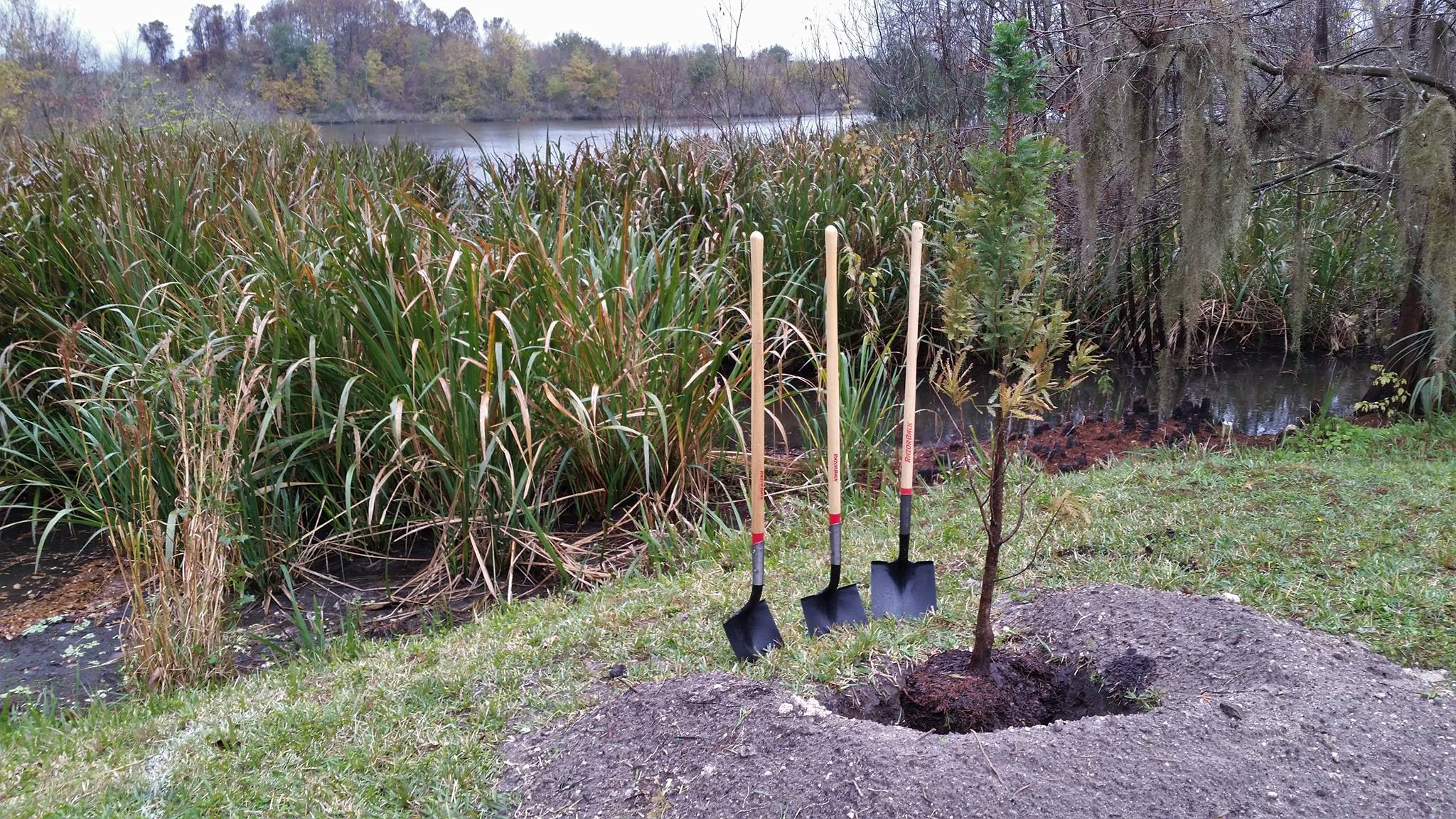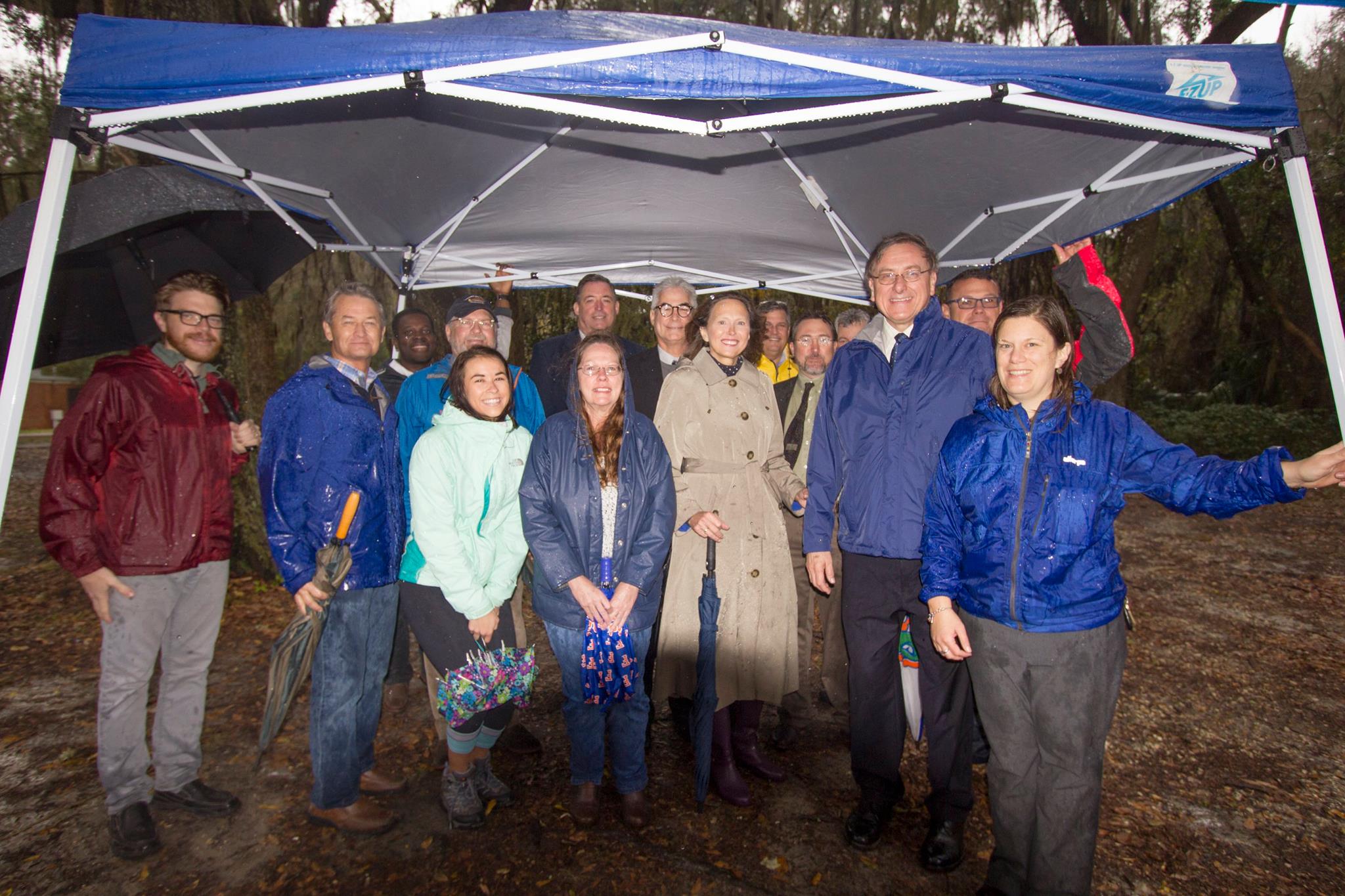Tree Planting and Arbor Day Celebration
Friday, January 15, 2016
9:00 am – Lake Alice shore (near the intersection of Museum Rd. and Village Dr.)

Trees Planted
- Peve Minaret Bald Cypress – Taxodium distichum ‘Peve Minaret’: Exceptional dwarf upright tree with attractive fern-like textured foliage. Flat yellow-green needles provide a long season of color, turning rusty-brown in fall. Papery, reddish bark provides excellent winter interest. Slowly grows in a dense pyramidal form. Excellent accent specimen. This will be the first planted on campus.
- Eastern Red Cedar – Juniperus virginiana: Redcedar is an evergreen growing 40 to 50 feet tall in an oval, columnar, or pyramidal form (very diverse) and spreading 8 to 15 feet when given a sunny location. It develops a brownish tint in winter in the north and is sometimes used in windbreaks or screens. The fruit is a blue berry on female trees and is ornamental when produced in quantity. Birds devour the fruit and ‘plant’ it along farm fences and in old abandoned fields.
- White Oak – Quercus alba: White oak is a long-lived, slow-growing tree, reaching 60 to 100 feet in height with a spread of 50 to 90 feet in its native bottomland soil. Old specimens can be massive, growing to be several hundred years old. Since trunks can be six feet in diameter leave plenty of room for this tree in the landscape. The red fall color is fairly reliable year to year and is outstanding among the oaks in USDA hardiness zones 8a and colder areas. There are very few specimens planted on campus.
- Bermuda Cedar – Juniperus bermudiana: This evergreen tree grow to 50 feet tall and has papery bark that peelsin strips. The foliage is produced in blue-green sprays. It is known for its heavy, sweet aroma, useful and attractive reddish timber, significant role in Bermuda’s history, and notable presence in Bermuda’s historic homes. This will be the first planted on campus.

Remarks from Dr. Tim White
School of Forest Resources and Conservation, UF/IFAS
“Welcome, my pleasure to be here with you to plant this ceremonial tree and special thanks to the President and Ms Fuchs for braving the elements to be with us.
Theodore Roosevelt once said, “To exist as a nation, to prosper as a state and to live as a people, we must have trees”
So the importance of trees and forests was recognized early on. The first Arbor Day in the US was in 1872 and Arbor Day is now celebrated in all 50 states and 41 countries.
Arbor Day is important because trees and forests are important. And someone has to speak for the trees – today that’s us. So, what are some of the benefits that trees and forests provide?
There is the economic importance – producing paper, wood products and all the other economic goods that come from forests.
Just as a factoid, forests are the single largest AG crop in Florida – more important than citrus in terms of total economic impact.
And some of the economic products from forests might surprise you: diapers (it’s the absorbent fluff pulp that does the work), cell phone screens (made out of cellulose acetate), and toothpaste and shampoo (pure cellulose makes them smooth)
But in addition to economic values, trees and forests provide so many more benefits and here are just a few:
- Provide recreational opportunities – hunting, fishing, hiking, camping, birding
- Provide domestic wood for heating and cooking – 80% of the population of Africa still heats and cooks with wood
- Produce the oxygen we breath – 20% of world’s O2 is produced in the Amazon alone
- Fight climate change – each year forests remove 1/3 of the total fossil fuel GHG emissions produced
- Clean the freshwater – 60% of the world’s freshwater filters through forests
- House biodiversity – 60 to 80% of all known terrestrial species live in forests
- In cities, trees remove pollution from the air – for example in Chicago the trees annually remove 18,000 tons of pollution from the air
- Trees improve well being – office workers are less stressed and students get better grades when there are trees in the neighborhood
- Trees save energy – trees can cool a city by 10F and reduce a home’s energy consumption by up to 25%
In the School of Forest Resources and Conservation, every day is Arbor Day. Our faculty and staff create new knowledge through research and they educate students and the general public about the best ways to make sure that forests can continue to sustainably provide all of those economic, social and environmental benefits.
I’ll end with an African Proverb, “The best time to plant a tree is 20 years ago. The second best time is now”.
So whether it’s these trees planted on Arbor Day, or these tree representing all that forests do for us, thank you for being here and appreciating the many roles that trees play in our lives.”
